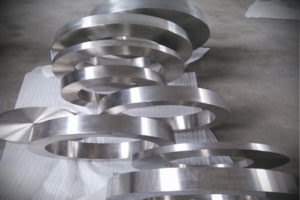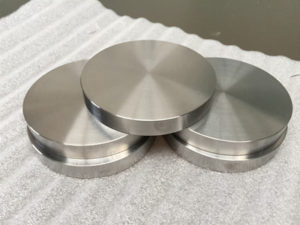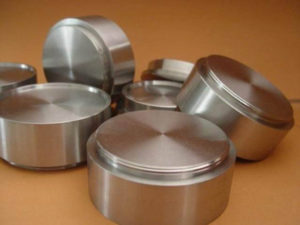Titanium alloy has the advantages of low specific gravity (about 4.5g/cm³), high melting point (about 1600 °C), good plasticity, high specific strength and corrosion resistance, and can work at high temperature for a long time (currently hot titanium alloy has been used at 500 °C). Therefore, it has been increasingly used as an important bearing component of aircraft and aircraft engines, in addition to titanium alloy materials. In addition to forgings, there are castings, sheets (such as aircraft skins), fasteners and so on. The weight ratio of titanium alloys used in modern foreign airplanes has reached about 30%. It can be seen that titanium alloys have broad prospects in the aviation industry. Of course, titanium alloys also have the following shortcomings: large deformation resistance, poor thermal conductivity, high notch sensitivity (about 1.5), and significant influence of changes in microstructure on mechanical properties, which lead to complexity in smelting, forging and heat treatment. Therefore, nondestructive testing technology to ensure the metallurgical and processing quality of titanium alloy products is an important subject. Following are the main defects in the inspection of titanium alloy forgings.



- Segregation Defects
Apart from β segregation, β spot, titanium rich segregation and strip α segregation, the most dangerous one is interstitial α stable segregation (type I α segregation), which is often accompanied by small holes, cracks, oxygen, nitrogen and other gases, and is brittle. There are also aluminium-rich α stable segregation (type II α segregation), which also constitutes a dangerous defect due to cracks and brittleness.
- Inclusions
Most of them are metal inclusions with high melting point and high density. High melting point and high density elements in titanium alloys are not fully melted and left in the matrix to form (e.g. molybdenum inclusions), cemented carbide tool debris mixed with raw materials (especially recycled materials) or inappropriate electrode welding process (vacuum consumable electrode remelting method is commonly used in titanium alloys smelting), for example. In tungsten arc welding, high density inclusions such as tungsten inclusions and titanium inclusions are left behind. The existence of inclusions can easily lead to the occurrence and propagation of cracks, so it is not allowed to exist defects (for example, according to the 1977 data of the Soviet Union, the high-density inclusions with diameters of 0.3-0.5mm found in the X-ray examination of titanium alloys must be recorded).
- Residual shrinkage
- Holes
Holes do not necessarily exist alone, but may also exist densely, which will accelerate the propagation of low cycle fatigue cracks and lead to early fatigue failure.
- Cracks
It mainly refers to forging cracks. Titanium alloy has high viscosity, poor fluidity and poor thermal conductivity, so it is easy to produce shear band (strain line) in the forging because of the large surface friction, obvious internal deformation heterogeneity and large internal and external temperature difference during forging deformation, which will lead to cracking when it is serious, and its orientation is generally along the maximum deformation stress. Direction.
- Overheating
Titanium alloys have poor thermal conductivity. In addition to improper heating, the forgings or raw materials are overheated. In the process of forging, it is easy to overheat due to the thermal effect of deformation, which results in the change of microstructures and the formation of overheated Widmanstatten structure.



